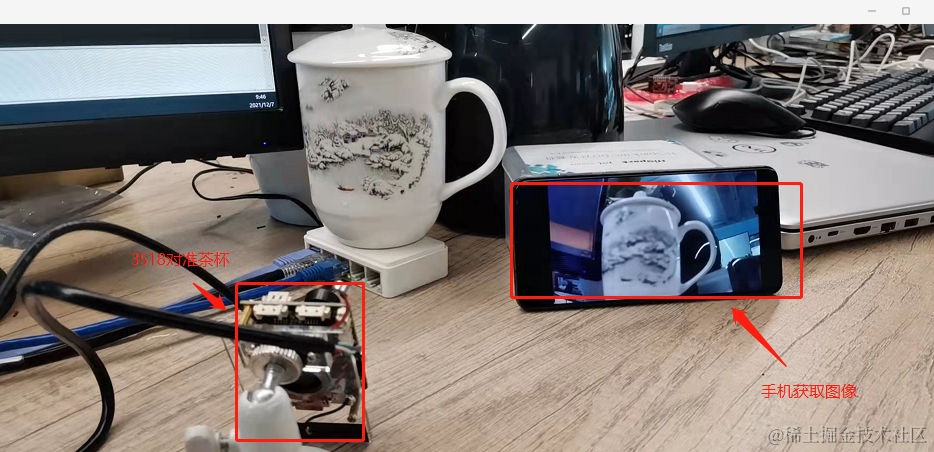产品配置规则
产品解决方案为基于开发板的完整产品,主要包含产品对OS的适配、部件拼装配置、启动配置和文件系统配置等。产品解决方案的源码路径规则为:vendor/{产品解决方案厂商}/{产品名称} _。
产品解决方案的目录树规则如下:
vendor
└── company # 产品解决方案厂商
├── product # 产品名称
│ ├── init_configs
│ │ ├── etc # init进程启动配置(可选,仅linux内核需要)
│ │ └── init.cfg # 系统服务启动配置
│ ├── hals # 产品解决方案OS适配
│ ├── BUILD.gn # 产品编译脚本
│ └── config.json # 产品配置文件
│ └── fs.yml # 文件系统打包配置
└── ......
注意 :新增产品须按如上的规则创建目录和文件,编译构建系统将按该规则扫描已配置的产品。
开发前请熟悉鸿蒙开发指导文档:[gitee.com/li-shizhen-skin/harmony-os/blob/master/README.md]点击或者复制转到。
关键的目录和文件详细介绍如下:
vendor/company/product/init_configs/etc 该文件夹中包含rcS脚本,Sxxx脚本和fstab脚本。init进程在启动系统服务之前执行这些脚本。执行的流程为“rcS->fstab->S00-xxx“。Sxxx脚本中的内容与开发板和产品需要有关,主要包括设备节点的创建、创建目录、扫描设备节点、修改文件权限等等。这些文件在产品编译的BUILD.gn中按需拷贝到产品out目录中,最终打包到rootfs镜像中。
vendor/company/product/init_configs/init.cfg init进程启动服务的配置文件,当前支持解析的命令有:
- start: 启动某个服务
- mkdir: 创建文件夹
- chmod: 修改指定路径/文件的权限
- chown: 修改指定路径/文件的属组
- mount: 挂载命令
该文件中的各个字段的解释如下:
{ "jobs" : [{ # job数组,一个job对应一个命令集合。job的执行顺序:pre-init - > init - > post-init。 "name" : "pre-init", "cmds" : [ "mkdir /storage/data", # 创建目录 "chmod 0755 /storage/data", # 修改权限,权限值的格式为0xxx, 如0755 "mkdir /storage/data/log", "chmod 0755 /storage/data/log", "chown 4 4 /storage/data/log", # 修改属组,第一个数字为uid, 第二个数字为gid ...... "mount vfat /dev/mmcblock0 /sdcard rw,umask=000" # 挂载,格式为: mount [文件系统类型] [source] [target] [flags] [data] # 其中flags仅支持:nodev、noexec、nosuid和rdonly ] }, { "name" : "init", "cmds" : [ # 按cmds数组顺序启动启动服务 "start shell", # 注意:start与服务名称之间有且只有一个空格 ...... "start service1" ] }, { "name" : "post-init", # 最后执行的job, init进程启动完成后的处理(如驱动初始化后再mount设备) "cmds" : [] } ], "services" : [{ # service数组,一个service对应一个进程 "name" : "shell", # 服务名称 "path" : ["/sbin/getty", "-n", "-l", "/bin/sh", "-L", "115200", "ttyS000", "vt100"], # 可执行文件全路径,path必须为第一个元素 "uid" : 0, # 进程的uid,须与二进制文件的uid保持一致 "gid" : 0, # 进程的gid,须与二进制文件的gid保持一致 "once" : 0, # 是否为一次性进程,1:进程退出后,init不在重新拉起。0:常驻进程,进程若退出,init将重新拉起 "importance" : 0, # 是否为关键进程,1:是关键进程,若进程退出,init将会重启单板。0:非关键进程,若进程退出,init不会重启单板 "caps" : [4294967295] }, ...... ] }vendor/company/product/init_configs/hals 解决方案厂商对OS的适配,需要实现的接口请见各个部件的readme说明文档。
vendor/company/product/config.json config.json为编译构建的主入口,包含了开发板、OS部件和内核等配置信息。
以基于hispark_taurus开发板的ipcamera产品为例,配置文件如下:{ "product_name": "ipcamera", # 产品名称 "version": "3.0", # config.json的版本号, 固定"3.0" "type": "small", # 系统类型, 可选[mini, small, standard] "ohos_version": "OpenHarmony 1.0", # 选择的OS版本 "device_company": "hisilicon", # 芯片厂商 "board": "hispark_taurus", # 开发板名称 "kernel_type": "liteos_a", # 选择的内核类型 "kernel_version": "3.0.0", # 选择的内核版本 "subsystems": [ { "subsystem": "aafwk", # 选择的子系统 "components": [ { "component": "ability", "features":[ "enable_ohos_appexecfwk_feature_ability = true" ] } # 选择的部件和部件特性配置 ] }, { ...... } ...... 更多子系统和部件 } }vendor/company/product/fs.yml 该文件用于配置文件系统镜像制作过程,将编译产物打包成文件系统镜像,比如用户态根文件系统rootfs.img和可读写的userfs.img。它由多个列表组成,每个列表对应一个文件系统。字段说明如下:
fs_dir_name: 必填,声明文件系统文件名, 如rootfs、userfs fs_dirs: 选填,配置out下文件目录与文件系统文件目录的映射关系,每个文件目录对应一个列表 source_dir: 选填,out下目标文件目录,若缺失则将根据target_dir在文件系统下创建空目录 target_dir: 必填,文件系统下对应文件目录 ignore_files:选填,声明拷贝忽略文件 dir_mode: 选填,文件目录权限,默认755 file_mode: 选填,该文件目录下所有文件的权限,默认555 fs_filemode: 选填,配置需要特殊声明权限的文件,每个文件对应一个列表 file_dir: 必填,文件系统下具体文件路径 file_mode: 必填,文件权限声明 fs_symlink: 选填,配置文件系统软连接 fs_make_cmd: 必填,配置需要制作文件系统脚本,OS提供的脚本在build/lite/make_rootfs下, 支持linux,liteos内核和ext4、jffs2、vfat格式。也支持芯片解决方案厂商自定义。 fs_attr: 选填,根据配置项动态调整文件系统其中fs_symlink、fs_make_cmd字段支持以下变量:
- rootpath代码根目录,对应gn的{ohos_root_path}
- outpath产品out目录,对应gn的{root_out_dir}
- ${fs_dir} 文件系统目录,由以下变量拼接而成
- ${root_path}
- ${fs_dir_name}
注意 :fs.yml是可选的,对于没有文件系统的设备可不配置。
- vendor/company/product/BUILD.gn 产品编译的入口,主要用于编译解决方案厂商源码和拷贝启动配置文件。如果某个产品被选择为要编译的产品,那么对应产品目录下的BUILD.gn会默认编译。一个典型的产品编译BUILD.gn应该如下:
group("product") { # target名称需与product名称即三级目录名称一致 deps = [] deps += [ "init_configs" ] # 拷贝init配置 ...... # 其他 }
新增并编译产品
编译构建支持芯片解决方案和部件的灵活拼装,形成定制化的产品解决方案。具体步骤如下:
创建产品目录 按照产品配置规则创建产品目录,以基于“rtl8720“开发板的wifiiot模组为例,在代码根目录执行:
mkdir -p vendor/my_company/wifiiot拼装产品 在新建的产品目录下新建config.json文件,以步骤1中的wifiiot为例,vendor/my_company/wifiiot/config.json可以是:
{ "product_name": "wifiiot", # 产品名称 "version": "3.0", # config.json的版本号, 固定"3.0" "type": "small", # 系统类型, 可选[mini, small, standard] "ohos_version": "OpenHarmony 1.0", # 使用的OS版本 "device_company": "realtek", # 芯片解决方案厂商名称 "board": "rtl8720", # 开发板名称 "kernel_type": "liteos_m", # 选择的内核类型 "kernel_version": "3.0.0", # 选择的内核版本 "subsystems": [ { "subsystem": "kernel", # 选择的子系统 "components": [ { "component": "liteos_m", "features":[] } # 选择的部件和部件特性 ] }, ... { 更多子系统和部件 } ] } 注意 :编译构建系统编译前会对device_company,board,kernel_type,kernel_version、subsystem、component字段进行有效性检查,其中device_company,board,kernel_type,kernel_version应与已知的芯片解决方案匹配,subsystem、component应与build/lite/components下的部件描述匹配。
注意 :编译构建系统编译前会对device_company,board,kernel_type,kernel_version、subsystem、component字段进行有效性检查,其中device_company,board,kernel_type,kernel_version应与已知的芯片解决方案匹配,subsystem、component应与build/lite/components下的部件描述匹配。适配OS接口 在产品目录下创建hals目录,并将产品解决方案对OS适配的源码和编译脚本放入该目录下。
配置系统服务 在产品目录下创建init_configs目录,并在init_configs目录下创建init.cfg文件,按需配置要启动的系统服务。
配置init进程(仅linux内核需要) 在init_configs目录下创建etc目录,然后在etc下创建init.d文件夹和fstab文件。最后按产品需求在init.d文件下创建并编辑rcS文件和Sxxx文件。
配置文件系统镜像(可选,仅支持文件系统的开发板需要) 在产品目录下创建fs.yml文件。fs.yml需按产品实际情况配置,一个典型的fs.yml文件如下:
- fs_dir_name: rootfs # 镜像的名称 fs_dirs: - # 将编译生成的out/my_board/my_product/bin目录下的文件拷贝到rootfs/bin中,并忽略测试bin source_dir: bin target_dir: bin ignore_files: - Test.bin - TestSuite.bin - # 将编译生成的out/my_board/my_product/libs目录下的文件拷贝到rootfs/lib中,忽略所有.a文件,并设置文件和文件夹的权限为644和755 source_dir: libs target_dir: lib ignore_files: - .a dir_mode: 755 file_mode: 644 - source_dir: usr/lib target_dir: usr/lib ignore_files: - .a dir_mode: 755 file_mode: 644 - source_dir: config target_dir: etc - source_dir: system target_dir: system - source_dir: sbin target_dir: sbin - source_dir: usr/bin target_dir: usr/bin - source_dir: usr/sbin target_dir: usr/sbin - # 创建一个proc空目录 target_dir: proc - target_dir: mnt - target_dir: opt - target_dir: tmp - target_dir: var - target_dir: sys - source_dir: etc target_dir: etc - source_dir: vendor target_dir: vendor - target_dir: storage fs_filemode: - file_dir: lib/ld-uClibc-0.9.33.2.so file_mode: 555 - file_dir: lib/ld-2.24.so file_mode: 555 - file_dir: etc/init.cfg file_mode: 400 fs_symlink: - # 在rootfs/lib下创建软连接ld-musl-arm.so.1 - > libc.so source: libc.so link_name: ${fs_dir}/lib/ld-musl-arm.so.1 - source: mksh link_name: ${fs_dir}/bin/sh - source: mksh link_name: ${fs_dir}/bin/shell fs_make_cmd: # 使用脚本将rootfs制作为ext4格式的image - ${root_path}/build/lite/make_rootfs/rootfsimg_linux.sh ${fs_dir} ext4 - fs_dir_name: userfs fs_dirs: - source_dir: storage/etc target_dir: etc - source_dir: data target_dir: data fs_make_cmd: - ${root_path}/build/lite/make_rootfs/rootfsimg_linux.sh ${fs_dir} ext4配置产品Patch(可选,视产品涉及部件是否需要打补丁而定) 在产品目录下创建patch.yml文件。patch.yml需按产品实际情况配置,一个典型的patch.yml文件如下:
# 需要打patch的路径 foundation/communication/dsoftbus: # 该路径下需要打的patch存放路径 - foundation/communication/dsoftbus/1.patch - foundation/communication/dsoftbus/2.patch third_party/wpa_supplicant: - third_party/wpa_supplicant/1.patch - third_party/wpa_supplicant/2.patch - third_party/wpa_supplicant/3.patch ...配置完成后,编译时增加--patch参数,即可在产品编译前将配置的Patch文件打到对应目录中,再进行编译:
hb build -f --patch编写编译脚本 在产品目录下创建BUILD.gn文件,按产品实际情况编写脚本。以步骤1中的wifiiot为例,BUILD.gn示例如下:
group("wifiiot") { # target名称与产品名一致 deps = [] deps += [ "init_configs" ] # 拷贝init配置 deps += [ "hals" ] # 将hals加入编译 ...... # 其他 } `HarmonyOS与OpenHarmony鸿蒙文档籽料:mau123789是v直接拿`

- 编译产品。 主要有两种编译方式,[命令行方式和hb方式],这里以命令行方式为例,假设编译的产品名是hispark_taurus_standard,则编译命令是:
./build.sh --product-name hispark_taurus_standard --ccache
审核编辑 黄宇
-
开发板
+关注
关注
25文章
5032浏览量
97372 -
鸿蒙
+关注
关注
57文章
2339浏览量
42805 -
OpenHarmony
+关注
关注
25文章
3713浏览量
16254
发布评论请先 登录
相关推荐
OpenHarmony鸿蒙南向开发案例:【智能猫眼(基于Hi3518开发板)】

鸿蒙OpenHarmony南向/北向快速开发教程-迅为RK3568开发板
迅为RK3568开发板鸿蒙OpenHarmony系统固件烧写步骤
openharmony开发版 openharmony开发板
开发板如何适配OpenHarmony 3.2
OpenHarmony鸿蒙南向开发案例:【智能猫眼(基于3516开发板)】

瑞芯微RK3566鸿蒙开发板OpenHarmony标准系统应用兼容性测试指导

瑞芯微RK3568鸿蒙开发板OpenHarmony系统修改cfg文件权限方法

触觉智能Purple Pi OH鸿蒙开发板成功适配OpenHarmony5.0 Release,开启新征程

如何在开源鸿蒙OpenHarmony开启SELinux模式?RK3566鸿蒙开发板演示

如何在Linux系统实现屏幕旋转?触觉智能RK3568鸿蒙开发板演示

OpenHarmony属性信息怎么修改?触觉智能RK3566鸿蒙开发板来演示

OpenHarmony默认30秒熄屏太麻烦?触觉智能鸿蒙开发板教你轻松取消





 鸿蒙OpenHarmony开发板:【产品配置规则】
鸿蒙OpenHarmony开发板:【产品配置规则】
 注意 :新增产品须按如上的规则创建目录和文件,编译构建系统将按该规则扫描已配置的产品。
注意 :新增产品须按如上的规则创建目录和文件,编译构建系统将按该规则扫描已配置的产品。











评论